Recent Articles
Popular Makes
Body Types
2022 Hyundai Ioniq 5 vs. 2022 Volkswagen ID.4
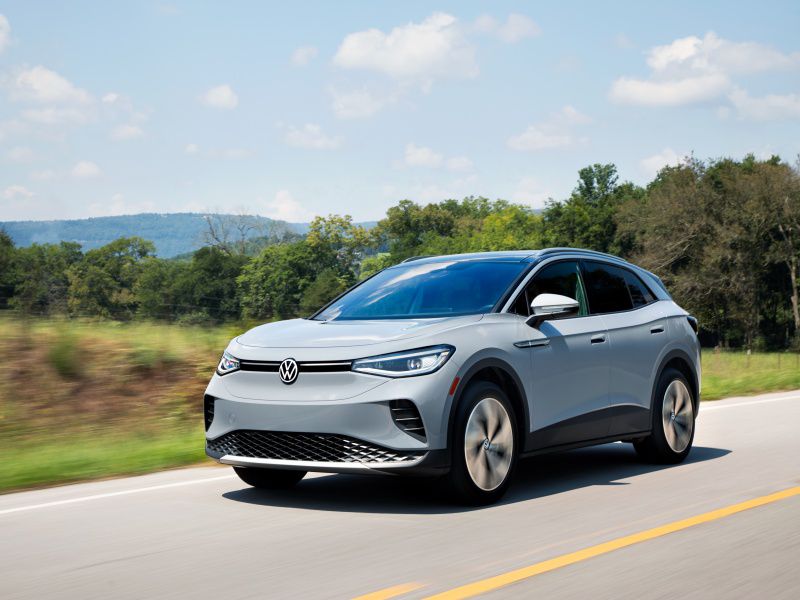
2021 Volkswagen ID.4 Pro S AWD ・ Photo by Volkswagen
The 2021 Volkswagen ID.4 is the first all-electric SUV from the German automaker. It’s available with all-wheel or rear-wheel drive and a range of up to 260 miles between charges. It’s a roomy SUV with seating for five people and plenty of space for carrying cargo.
The 2022 Hyundai Ioniq 5 is the first all-electric SUV from Hyundai. It too is available with either rear-wheel or all-wheel drive, but with a driving range of up to 303 miles between charges. It has standout styling with seating for five people across a range of three trims. Let’s take a closer look at these two electric SUVs to see which is better.
Three Well-Equipped Trims for Each
There are three trims of the Volkswagen ID.4 starting with the Pro. It’s priced at $39,995 with a 10-inch infotainment touchscreen and 6-way power heated front seats. The Pro S at $44,495 adds 12-way power front seats and a 12.0-inch infotainment touchscreen. A limited production first Edition was available for $43,995.
The Ioniq 5 is also available in three trims with pricing from $43,650 to $54,500. The base SE has a 12.3-inch infotainment touchscreen, 8-way power driver’s seat, and heated front seats. The SEL adds wireless device charging and a handsfree liftgate. The top Limited adds ventilated front seats and 8-speaker Bose premium audio. We give this to Hyundai, which has a higher base price but better standard features.
: Hyundai Ioniq 5
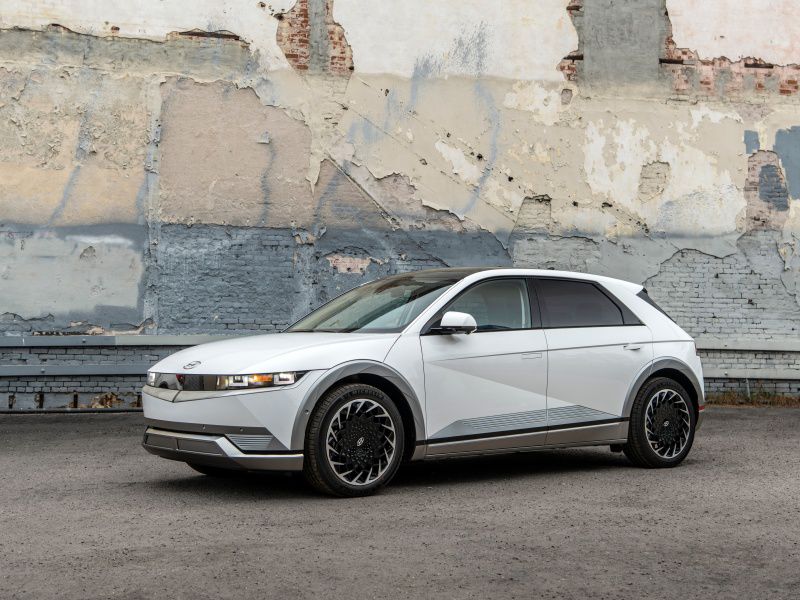
Photo by Hyundai
A Single Powertrain Option
The ID.4 delivers a total of 201 horsepower and 229 lb-ft of torque in rear-wheel-drive models. The numbers increase to 295 horsepower and 339 lb-ft of torque with all-wheel drive. It gets EPA-estimated fuel economy figures of 93 to 99 mpge.
The Ioniq 5 delivers 225 horsepower and 258 lb-ft of torque with rear-wheel drive or 320 horsepower and 446 lb-ft of torque with all-wheel drive. It gets an EPA-estimated fuel economy of between 98 and 114 mpge. That’s more horsepower and more torque for the Ioniq, making it more fun to drive. It also gets better fuel economy than the ID.4, making it our pick of the two.
: Hyundai Ioniq 5
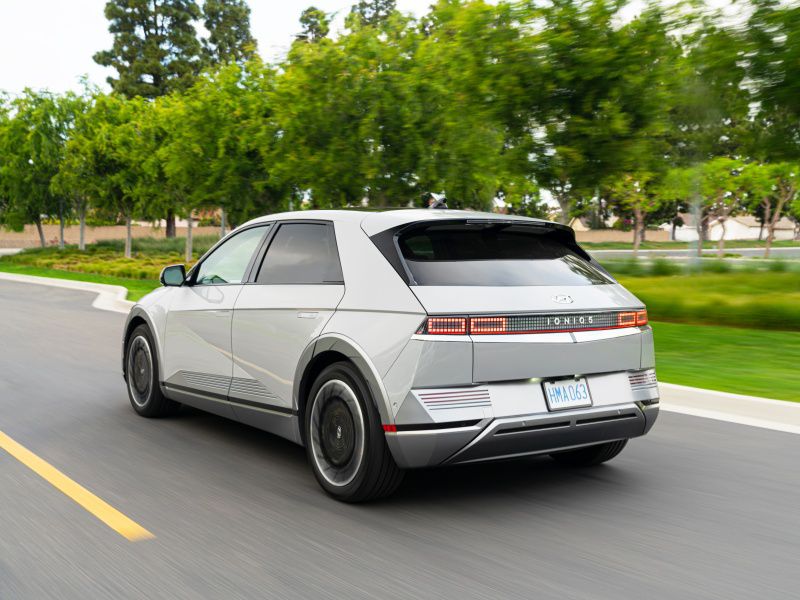
Photo by Hyundai
The Instant Response of an EV With a Smooth Ride
Driving an electric vehicle is different than driving one powered by gas. There’s the marked absence of noise, but there’s also more aggressive acceleration. There’s no waiting for the car to catch up to a heavy foot on the accelerator. The instant you press down, there’s a burst of power, making for a unique and engaging drive experience.
Both of these EVs offer strong performance, but the Ioniq comes in with more horsepower, and you can feel the difference. That horsepower combines with better handling to make the Ioniq more fun to drive. It takes corners smoothly, feels more controlled, and delivers a ride more like a luxury sedan than an SUV. It simply delivers a better, more engaging driving experience.
: Hyundai Ioniq 5
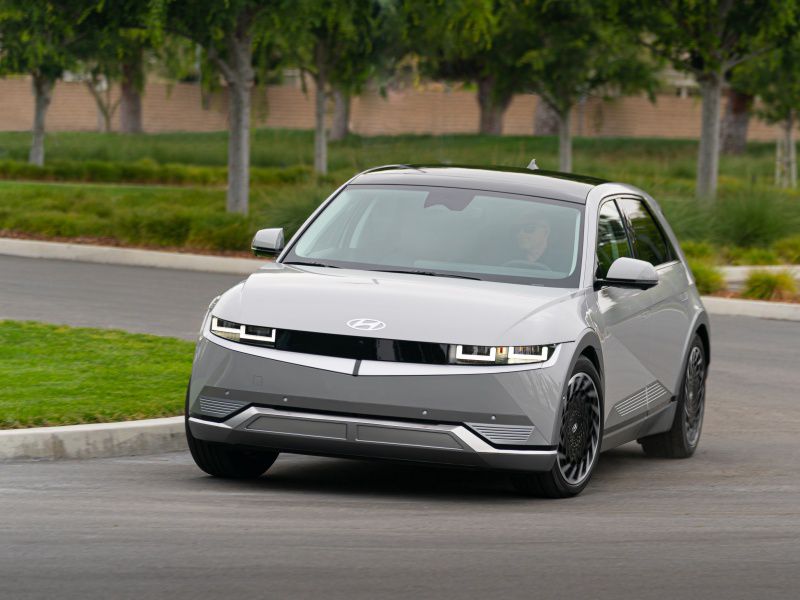
Photo by Hyundai
Let’s Talk Range
The ID.4 has an 82-kWh battery with a range of 260 miles for the Pro and 250 miles for the Pro S with rear-wheel drive. Those numbers drop to 249 miles for the Pro and 240 miles for the Pro S with all-wheel drive.
The Ioniq 5 has a 77.4-kWh battery that delivers a range of 303 miles with rear-wheel drive or 256 miles with all-wheel drive. The difference is close with all-wheel drive but a bit larger with rear-wheel drive. Whichever you choose, it’s likely more than enough to get you through a typical day without needing to charge, but when it comes time for road trips, you’ll be happy for the extra range in the Ioniq 5.
: Hyundai Ioniq 5
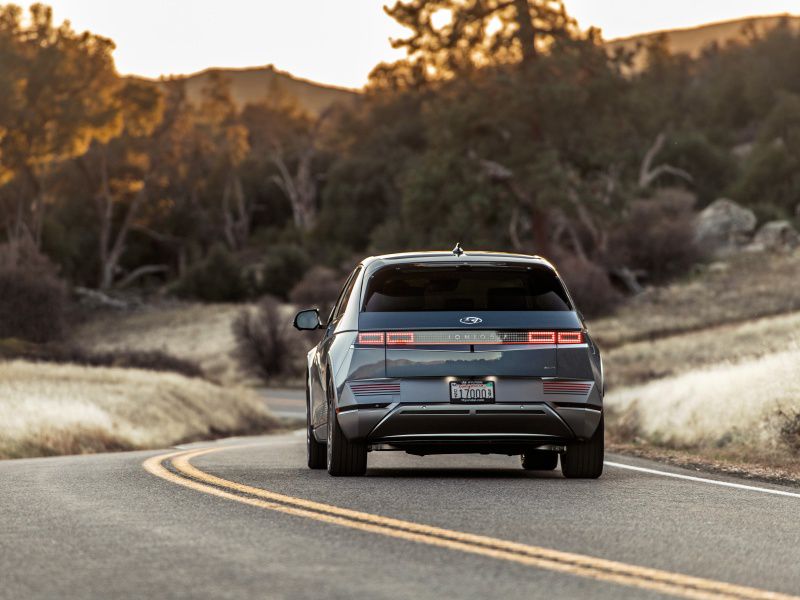
Photo by Hyundai
How Fast Can They Charge
The ID.4 uses fast charging that allows it to charge from 5 percent to 80 percent in 38 minutes and can get up to 62 miles of range in 10 minutes. If you use a Level 2 home charger, then plan for about 7.5 hours to fully charge.
The Ioniq 5 fully charges at a Level 2 charger in 6 hours and 43 minutes. At a rapid charger with 150 kW, it can go from 10 to 80 percent in 25 minutes, but if you use a rapid charger with 250 kW that number drops to just 18 minutes. Hyundai comes out ahead on charging for its faster overall charging time and its quick sprint to 80 percent.
: Hyundai Ioniq 5
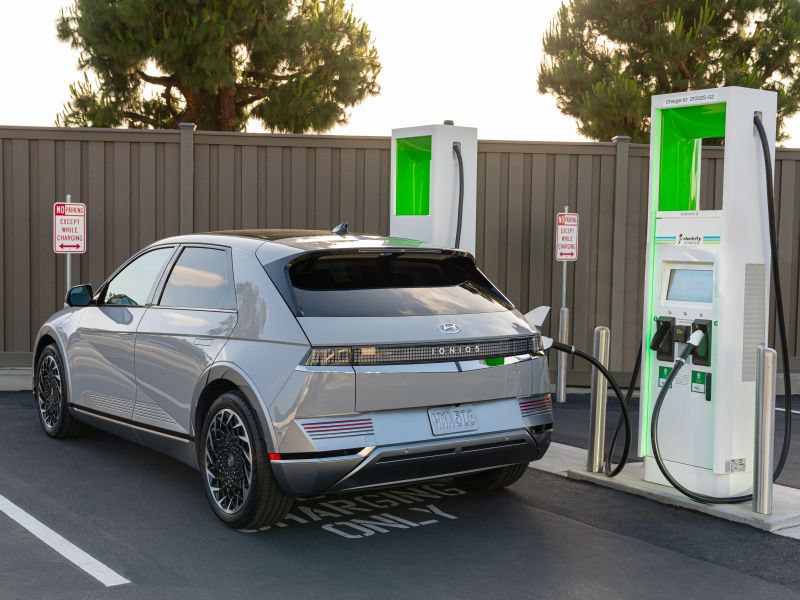
Photo by Hyundai
Interior Comfort and Design Quality
The ID.4 has seating for five people. It’s roomy and open with supportive front seats well-suited for longer drives. There’s ample room in the rear seats for three adults. Even those breaching 6-feet will find plenty of space for heads and knees.
The Ioniq 5 also seats five people with good room in the rear seats for tall passengers. While both are similar in size, the Ioniq 5 feels more open and airy. It’s beautifully designed with a simplicity that avoids feeling cheap. It’s quiet and comfortable making conversation easy with the feel of a luxury brand, rather than an affordable one.
: Hyundai Ioniq 5
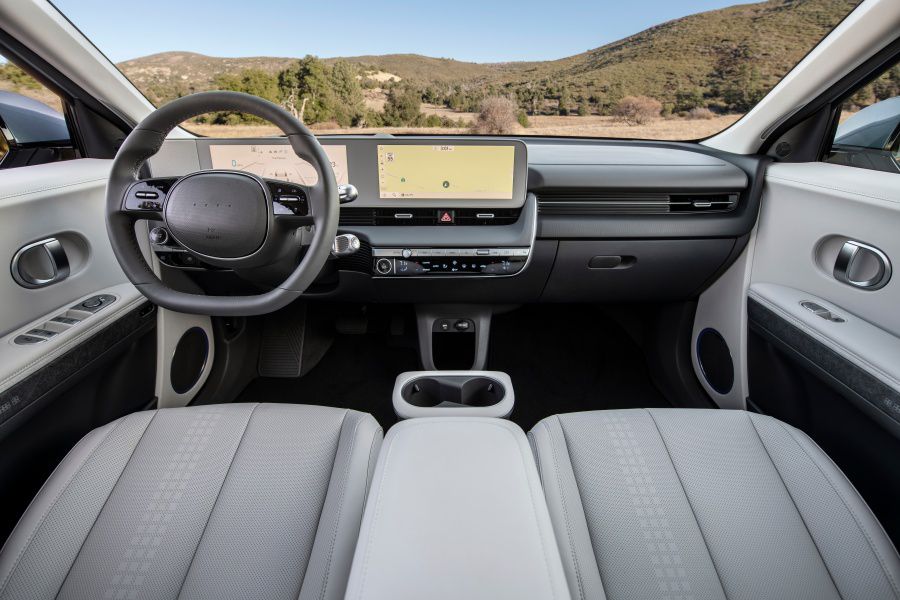
Photo by Hyundai
A Larger Infotainment Screen and Better Overall System
The ID.4 features a standard 10-inch infotainment touchscreen, navigation, and wireless charging. It also has Apple CarPlay and Android Auto with the Pro S adding a 12-inch touchscreen. It can be controlled by saying, “Hello ID” and using natural language commands.
The Ioniq 5 has a standard 12.3-inch infotainment touchscreen with navigation, Apple CarPlay, and Android Auto. Wireless charging is standard once you move up to the SEL. While the ID.4 has unique voice activation and standard wireless charging, it’s just not as easy to use. The system feels outdated while the Ioniq 5 is modern, intuitive, and less distracting with a larger touchscreen.
: Hyundai Ioniq 5
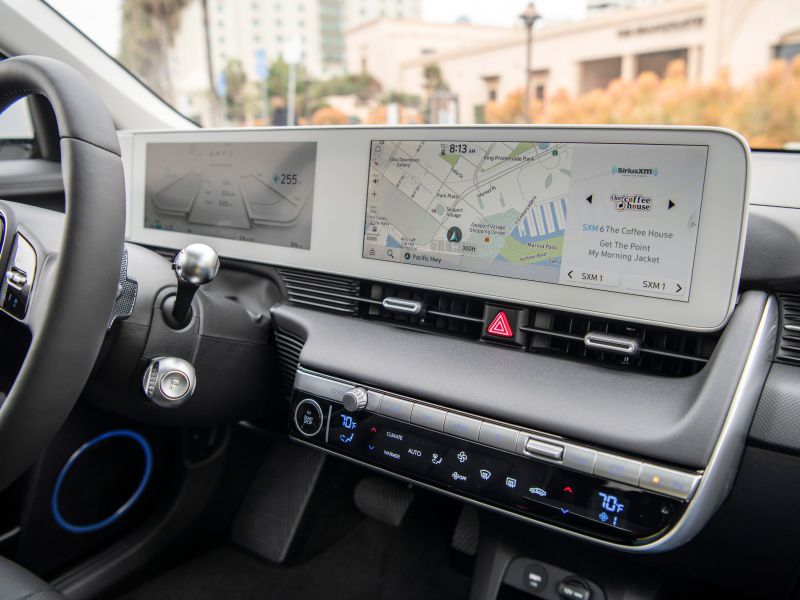
Photo by Hyundai
Lots of Standard Safety Features
The 2021 Volkswagen ID.4 is an Insurance Institute for Highway Safety (IIHS) Top Safety Pick+ as well as earning an overall 5-star rating from the National Highway Traffic Safety Administration (NHTSA). It includes standard automatic emergency braking, pedestrian detection, blind-spot monitoring, rear cross-traffic alert, lane departure warning, and lane keeping assist.
The 2021 Hyundai Ioniq 5 has not yet been crash tested. It has standard automatic emergency braking, lane keeping assist, lane following assist, intelligent speed limit assist, driver attention warning, safe exit assist, high beam assist, rear occupant alert, blind-spot collision avoidance assist, rear cross-traffic collision avoidance assist, and reverse parking sensors. That extensive list gives Hyundai another win.
: Hyundai Ioniq 5
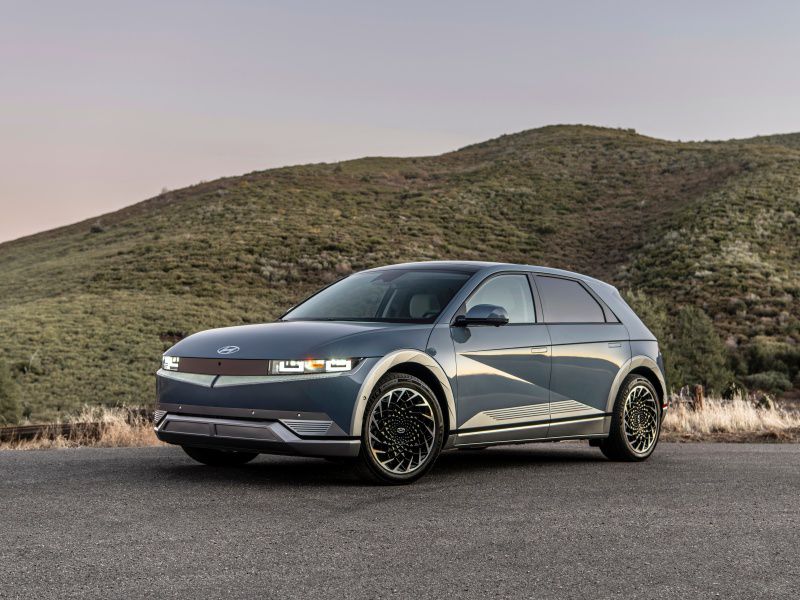
Photo by Hyundai
Ample Room for all Your Cargo
These are SUVs, which means they have to be able to manage cargo, not just people. The ID.4 has 30.3 cubic feet for cargo behind the second row with 64.2 cubic feet behind the first row. It does not have a front trunk (frunk) for extra storage.
The Ioniq 5 has 27.2 cubic feet behind the rear seats with 59.3 cubic feet behind the front seats. It does have a frunk, which adds .85 cubic feet of storage space. Even with the frunk, the Ioniq 5 doesn’t offer the same room for cargo that’s found in the ID.4.
: Volkswagen ID.4
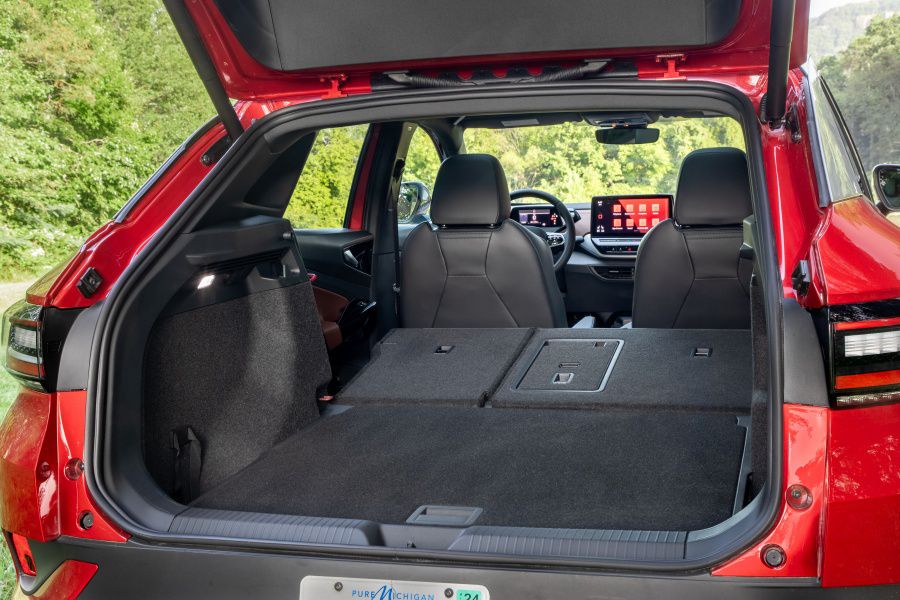
Photo by Volkswagen
And the Winner Is…
This one isn’t even close. If your priority is cargo, the go with the ID.4 as your electric SUV. Otherwise, the Ioniq 5 simply has more to offer. It has a longer range with faster charging and overall better performance than the ID.4. This includes better handling, too.
The interior has a higher quality with better visual appeal, and there’s a larger standard infotainment screen. It also has a long list of standard safety features. All these things combined make the Ioniq 5 our choice.
: Hyundai Ioniq 5
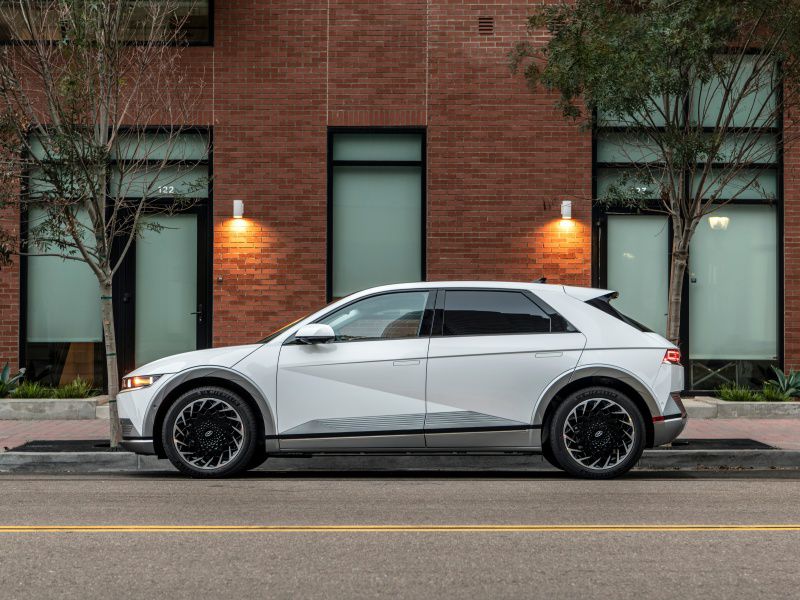
Photo by Hyundai